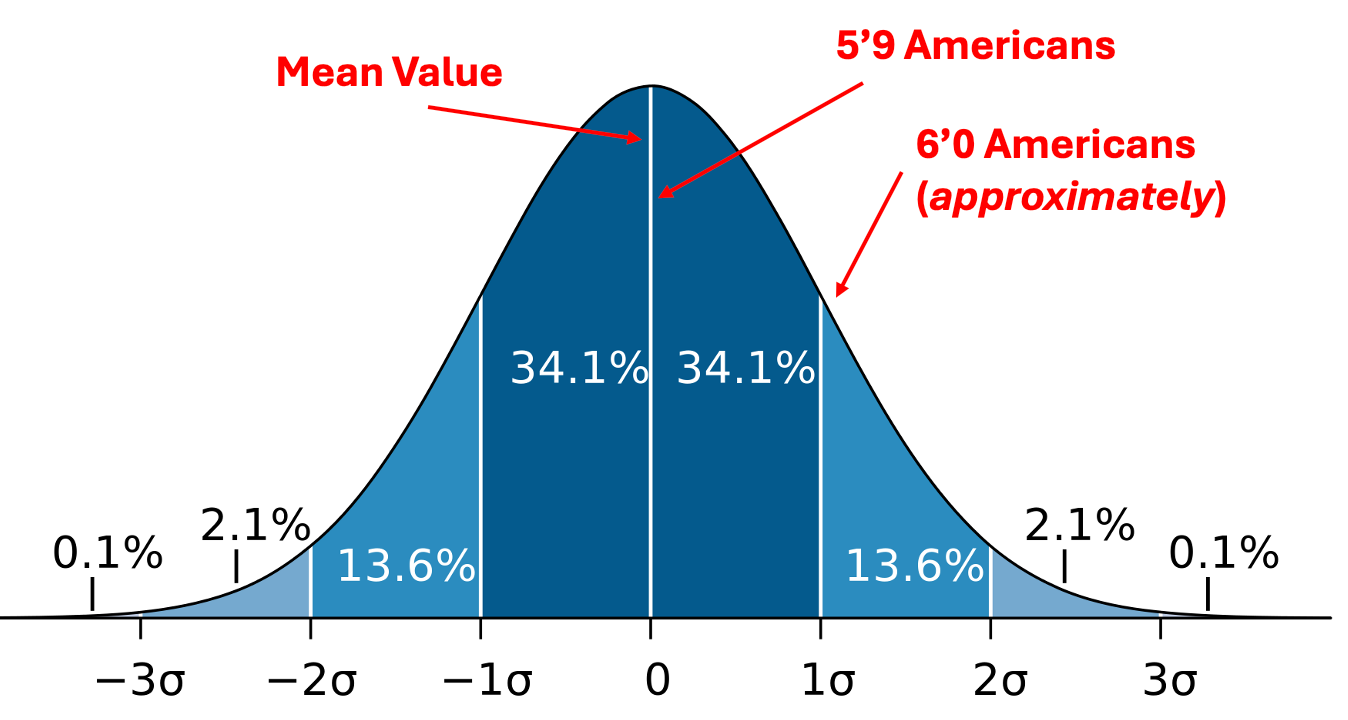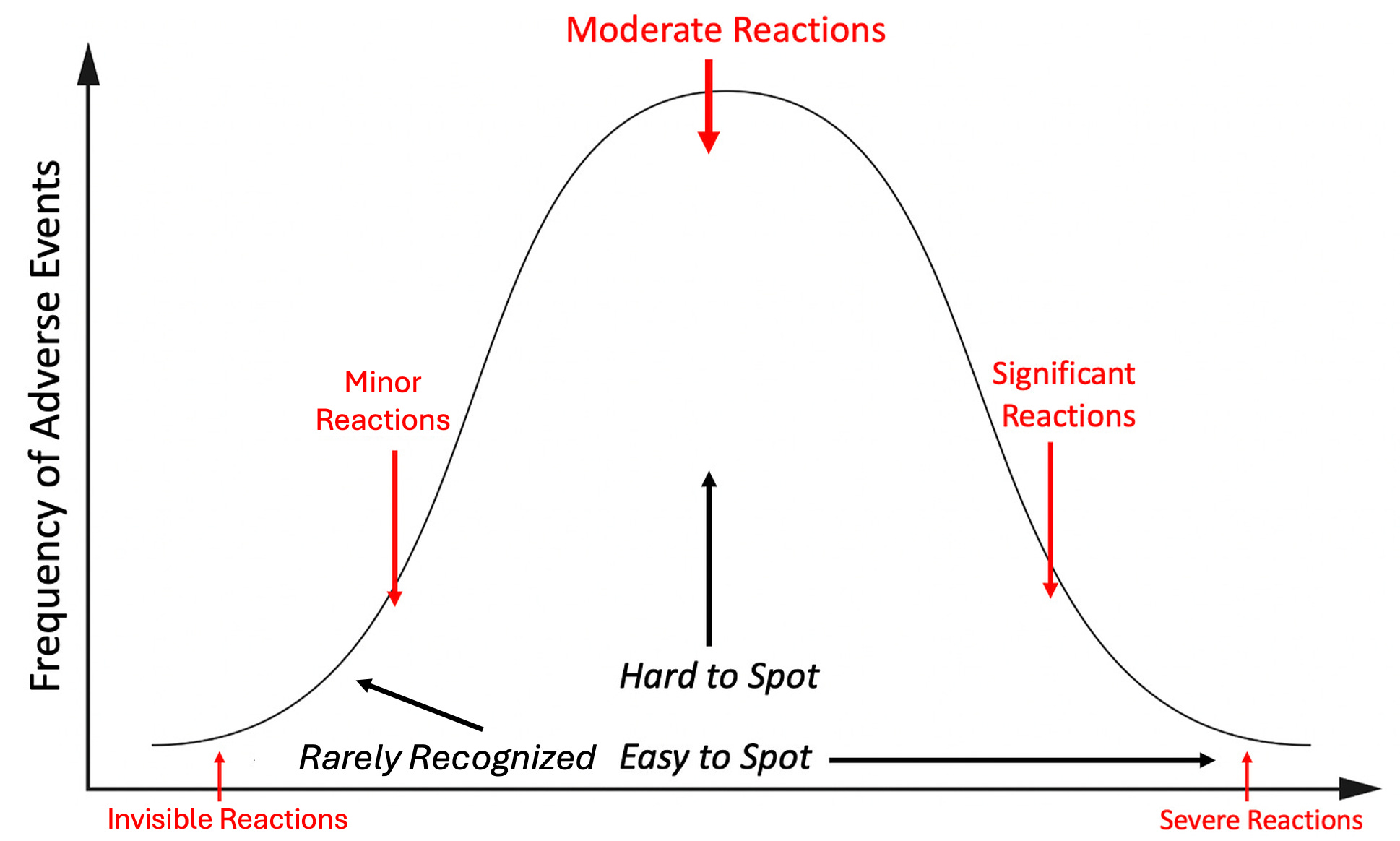One of the fundamental principles in statistics is that variable phenomena tend to distribute on a bell curve, with the average value (e.g., adult American men being 5’9—which is a bit above the global average) being by far the most common, while values become exponentially rarer as they move further away from that mean (e.g., only 15% of adult American men are at least six feet tall).

Sensitivity to pharmaceuticals and environmental toxins (e.g., synthetic chemicals) follows a similar pattern, with a minority of the population existing which is extremely sensitive to these things (and conversely, on the end of the bell curve, another minority exists on the opposite end which has a very high tolerance to them).

The important thing about this principle is that it can frequently allow you to infer a great deal from limited data. For example:
•Shortly after the COVID-19 vaccines entered the market, I had multiple people contact me to share that a loved one had died suddenly—something I’d never seen with any other vaccine. Given how frequently the standard vaccines cause significant injuries (e.g., the independent studies that have been done collectively show that the childhood vaccines cause between a 1.5 to 40 times increase in the rates of chronic illness), I immediately inferred that around 10% of recipients would experience significant side effects—which is insane for something being given to everyone. Later, large surveys showed 7% of recipients believed they’d had a “major effect from the vaccine,” 13.4% stated they’d developed a “severe health issue” after COVID vaccination, and 34% reported “minor effects” from the vaccine.
•After Ozempic hit the market, I began seeing a large number of people with minor or moderate issues from it. Because of this, I correctly inferred serious side effects would begin emerging, especially once the higher dose for weight loss began being used.
https://www.midwesterndoctor.com/p/how-your-clothes-and-their-materials-231
